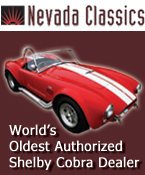
01-25-2017, 11:42 PM
|
 |
CC Member

|
|
|
Join Date: Feb 2012
Location: Keller,
TX
Cobra Make, Engine: Lonestar Classics LS427. Self-built 408W, AFR 195 heads, Performer RPM Intake, Quick Fuel 750, 407rwhp, 479rwtq
Posts: 549
|
|

 Not Ranked
Not Ranked
 Thoughts on oil pressure vs flow?
Thoughts on oil pressure vs flow?
I've always wondered what weight of oil would be best in my car. I built my own motor so I can't "just ask the builder what he recommends"...
I've heard some say "Put 10W-30 in everything" and just drive it. That's what I have been using. With my HV pump I get 75 PSI cold idle, 40 PSI hot idle, up to 70 PSI cruise.
I recently came across an article on BITOG that made the remark that no oil at ambient temperatures (anything less that 120 degrees Fahrenheit) is thin enough to flow well - so use the lightest oil made 0W. They also agreed with the 10psi per 1000 rpm rule. So their summary was to use 0W-XX - the XX being whatever weight oil fulfilled the 10per1000 rule with a minimum PSI of 15 at idle when hot. So if I get 70 PSI at 3000 RPM cruise with 0W-40, I should decrease the viscosity to 0W-30 or 0W-20 to get the pressure down. Lower pressure = higher flow. It is the "flow" that provides protection, not the pressure.
Thoughts on this logic? |


